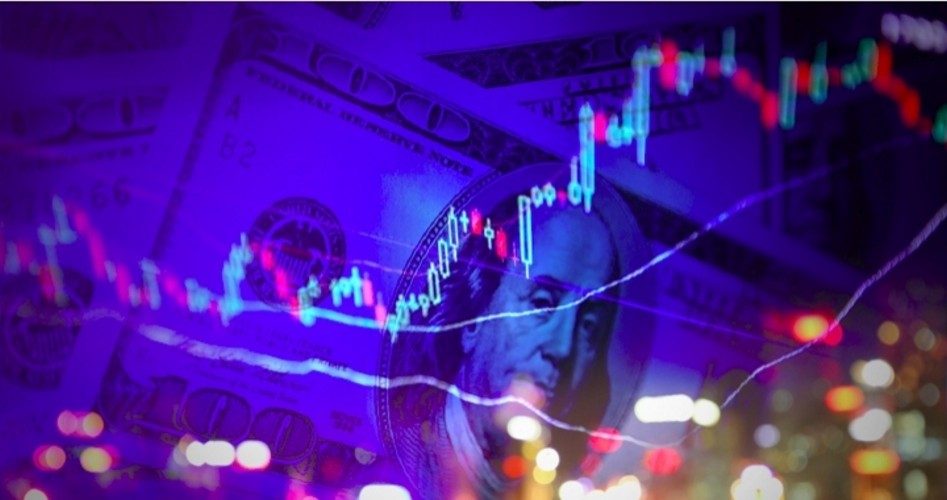
The small-cap Nasdaq 100 Index has rallied more than 43 percent since its low set on March 23. The S&P 500 Index has posted its largest 50-day rally in history. The Dow Jones Industrial Average has gained 7,600 points.
With all that is going on in the country and the world, how is that possible? The national riots, the confrontation with China building over Hong Kong, and the deaths continuing to mount as a result of the coronavirus, would all seem to be negatives on the market, driving investors away.
But, no. Investors aren’t looking out the back window, but instead are looking out the front. And they are increasingly seeing what they want to see and hope to see: a recovery that justifies their decision to invest in companies that appear likely to benefit and profit from it.
The president is perhaps the most well-informed individual on the planet. On May 29 he said, “We’re going to have a great third quarter, a great fourth quarter. I think next year is going to be one of our better years.”
There are trillions of dollars just itching to hear such confidence coming from the president. During the lockdown, consumers hunkered down and hoarded many things — toilet paper, canned goods, cleaning supplies, and cash. The savings rate, which is normally around five percent of personal incomes, soared to 12.7 per cent March and then to 33 percent in April. As a result, economists are expecting a virtual tsunami of consumer spending to occur once the economy is fully open.
And the economy is already opening. Continuing unemployment claims — the number of workers receiving unemployment benefits for at least two weeks — dropped by nearly four million last week. As Mark Zandi, the lead economist at Moody’s, said: “The job loss is abating. Layoffs appear to have peaked in late March and early April, and they were winding down by early May. I would expect job growth to resume in June.”
The report released by ADP on Wednesday confirmed Zandi’s outlook: Private employers laid off 2.7 million workers in May instead of the nine million forecasters were expecting. Zandi declared, “The COVID-19 recession is over.… It was the shortest recession in history.”
The New American reported on the first signs of life back in May, when a trio of reports released on May 15 showed a glimmer of the coming rebound. We reported a few days later that Trump’s economic advisor said, “It looks like the economy is picking up at a very rapid rate.” And then we reported on Monday that purchasing managers are clearly seeing a pick-up in economic activity: The ISM’s (the Institute of Supply Management) New Orders Index jumped 4.7 percent in May; its Production Index leapt 5.7 percent; its Employment Index rose by 4.6 percent; and its New Export Orders Index increased by 4.2 percent.
Apple reported that iPhone usage of its map app has jumped as workers are headed back to work and consumers headed back to restaurants. Real estate property showings are up, along with new mortgage applications. Airlines are adding new flights.
And the president has called on his Executive Branch agencies “to use any and all authority to waive, suspend and eliminate unnecessary regulations that impede economic recovery.”
Finally, and perhaps most importantly, the Federal Reserve has discarded any pretense of restraint in its fight to keep the economy from cratering. The head of the agency responsible for increasing the money supply, Jerome Powell, said last week, “We … will continue to react. We are not close to any limits that we might have.”
He doesn’t care that the Fed’s balance sheet has soared to unimaginable heights. He doesn’t care that his reckless flooding of the market with new cheap money hastens the day of reckoning. He said, “Of course our balance sheet can’t go to infinity … [but] I would say that I am comfortable with where we are now and the path we are on.… I don’t see any risks based on what we’re doing right now to inflation or to financial stability.”
Those remarks may come back to haunt him. But for now, Wall Street doesn’t care. Rule One for investors is “Don’t fight the Fed.” Besides, investors have been known to climb a “wall of worry,” defined as their tendency to surmount any number of negative factors and continue to invest anyway. “The markets’ ability,” according to Will Kenton (writing for Investopedia), “to climb a wall of worry reflects investor confidence that these issues will be resolved at some point.”
But for now, let the party continue. That, says Mike Bird in the Wall Street Journal, “is the only thing that matters.”
Image: honglouwawa/iStock/Getty Images Plus
An Ivy League graduate and former investment advisor, Bob is a regular contributor to The New American, writing primarily on economics and politics. He can be reached at [email protected].
Related articles:
Institute of Supply Management Says Purchasing Managers Are Guardedly Optimistic
Economic Green Shoots Appearing; Trump Moves to Water Them Via Regulatory Relief
Trio of Reports for April Show Economy Might Be Turning Around



